Counting Our Collections With a Five Frame
Over here at the Ginkgo Tree House, we are quite intentional about setting up math environments that don’t scream MATH CENTER. We try to have authentic materials that are fun to touch and play with and then we sneak in materials that will create deep math investigations all on their own. Children learn math at their own pace by using many different skill sets that don’t always come in a specific order. So we give them lots of options to let the learning come in their own unique style. By keeping it playful and hands-on, we set them up for math success.
The new math that is being taught in schools is actually quite wonderful. I’ve watched my own grandchildren gobbling it up because it makes so much sense and there are so many ways to reach the correct answer. They use ten frames a lot! So what is a ten frame?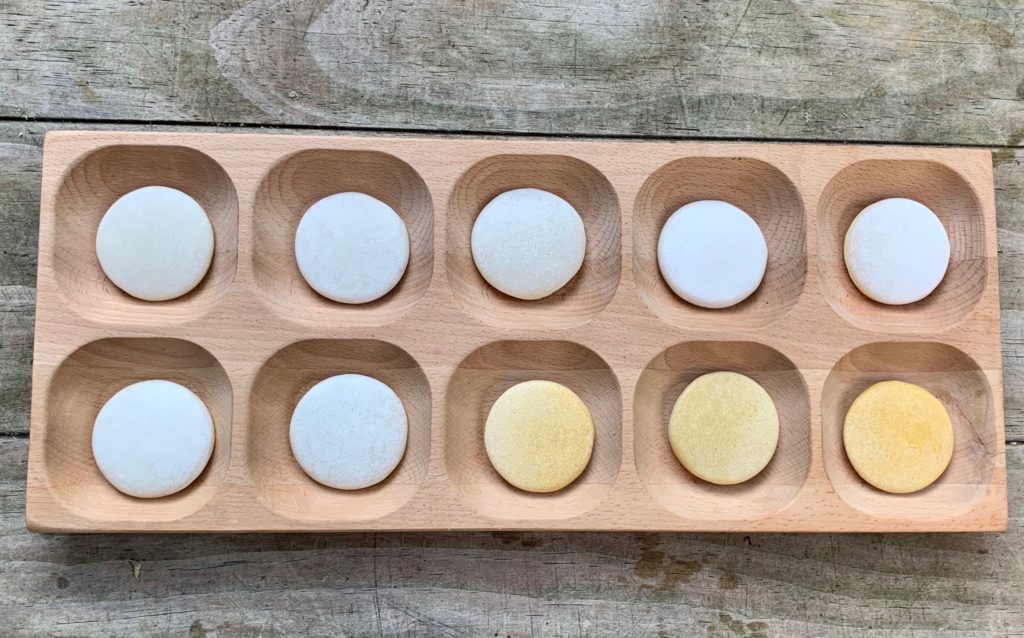
Ten frames are equal-sized rectangular boxes in a row where each box is large enough to hold a counter.
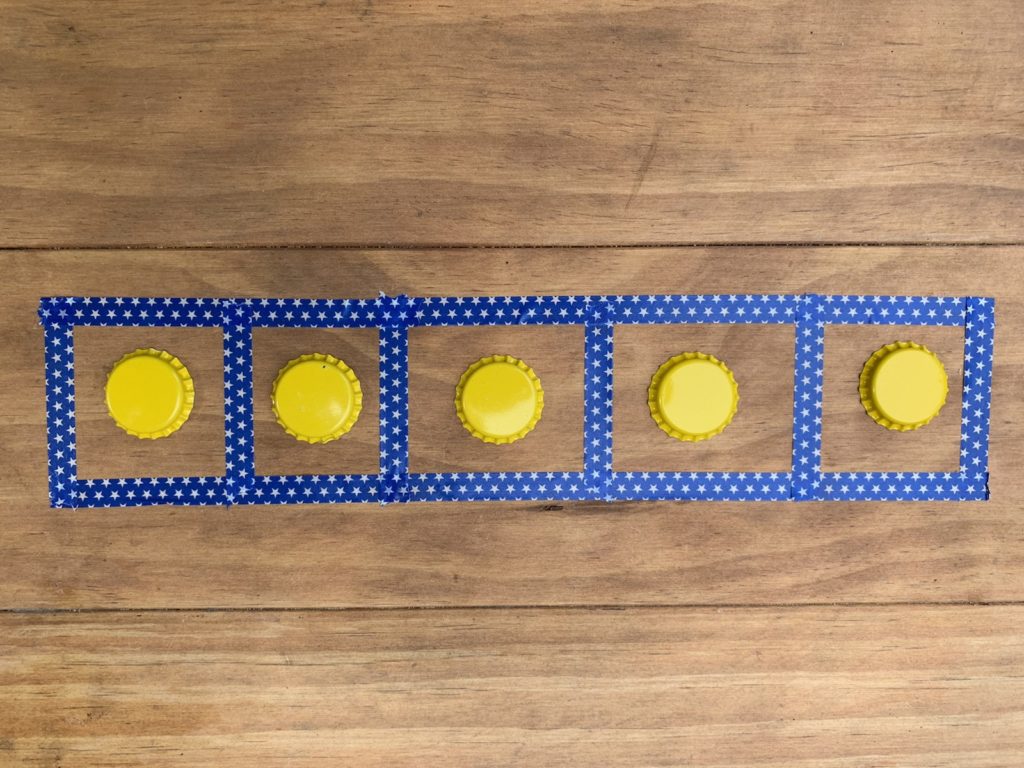 The five frame is arranged in a 1-by-5 design.
The five frame is arranged in a 1-by-5 design.
Five and ten frames allow students to physically place items, each within a single box, to create a visual representation for numbers from 0-10 to help students visualize given numbers in a set. This creates a strong foundation for math computation in the years to come. There are endless ways to create a ten frame, from egg cartons, cups and tape to chalk on the sidewalk—to name a few.
I love wooden ten frames, but they are ridiculously expensive. I have blogged before about my love for mancala boards. I have been finding mancala boards at thrift shops and yard sales for years. We have a collection that we use for playful math. This year, I had the grand idea of taping the ends of our mancala boards to create ten frames! Tada!
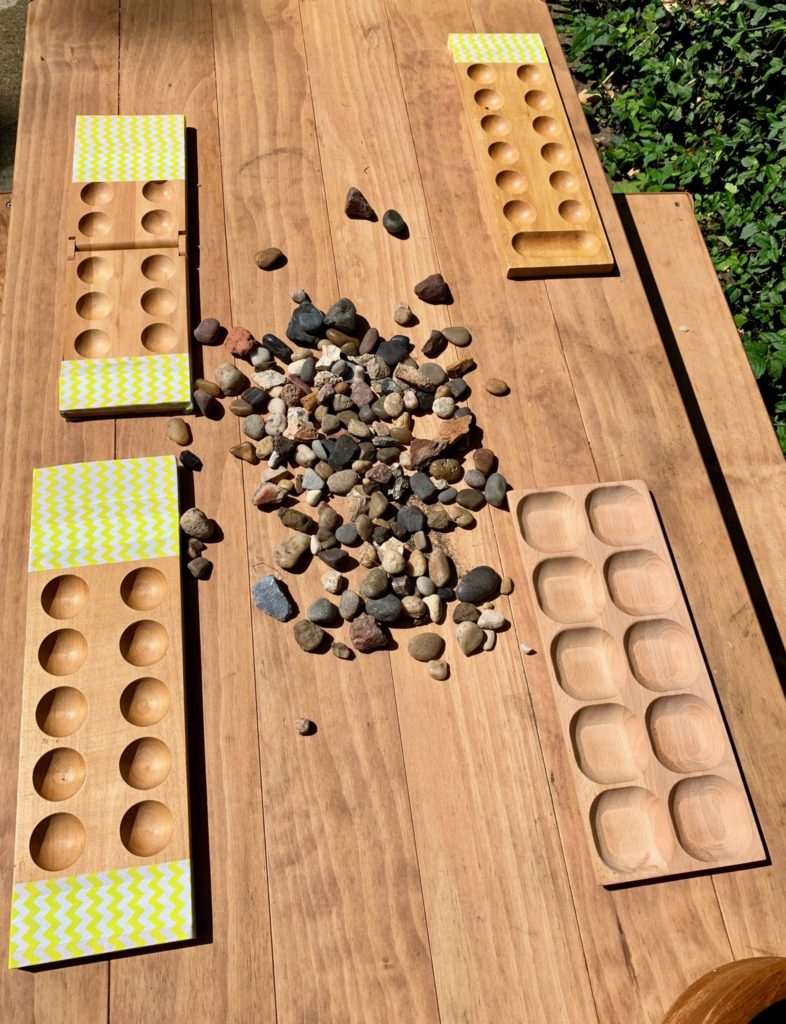
Yes, yes, I was feeling quite giddy. But I just couldn’t leave well enough alone.
So I cut them down. Yikes! What? I know, I know, but it’s that good, strong foundation we talked about in the last blog. So,I did it. I cut the mancala board into a ten frame!
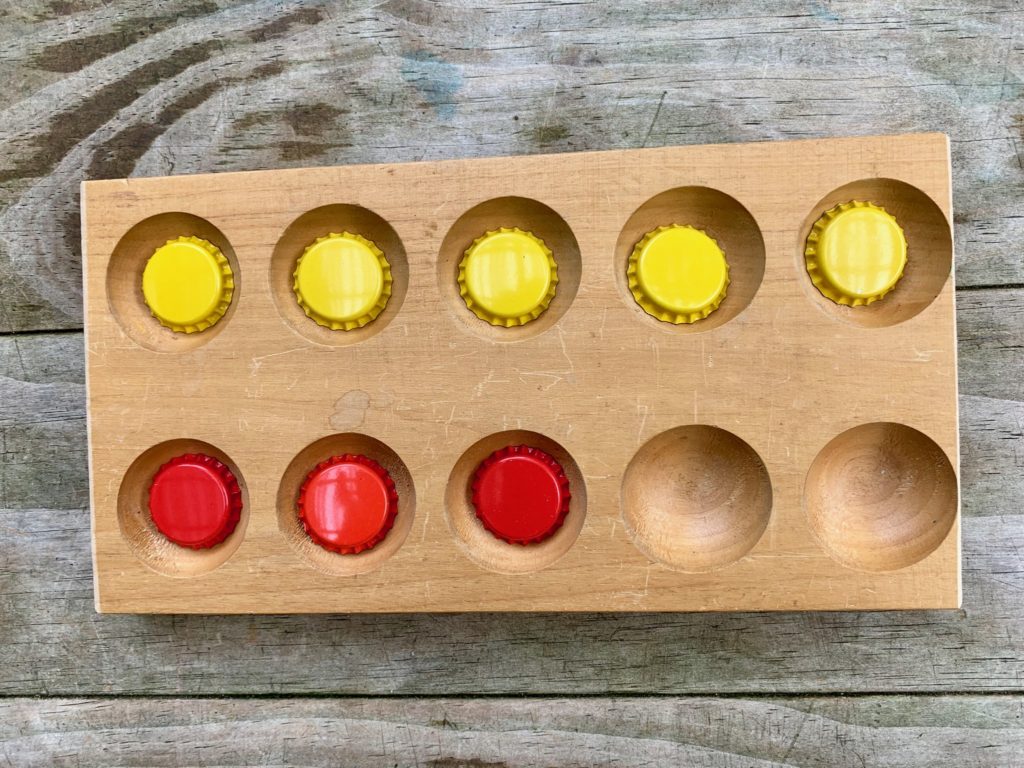 Then I realized with my group, five frames would be even better because we currently have a boatload of two-year-olds in our program. With a five frame, students are using smaller set sizes that are within their developmental counting range. Five frames expose our early learners to a tool that they will recognize in the academic world. Incorporating a five frame into their collection play sets them up for future math wizardry. By now, I was a bit saw happy, so I created a three frame to use with subitizing and a two frame and a one frame for one-to-one correlation. Remember, we are young and we are keeping this developmentally appropriate for the youngest in our program.
Then I realized with my group, five frames would be even better because we currently have a boatload of two-year-olds in our program. With a five frame, students are using smaller set sizes that are within their developmental counting range. Five frames expose our early learners to a tool that they will recognize in the academic world. Incorporating a five frame into their collection play sets them up for future math wizardry. By now, I was a bit saw happy, so I created a three frame to use with subitizing and a two frame and a one frame for one-to-one correlation. Remember, we are young and we are keeping this developmentally appropriate for the youngest in our program.
And, finally, we brought in our collections from last week! Voila! Math play.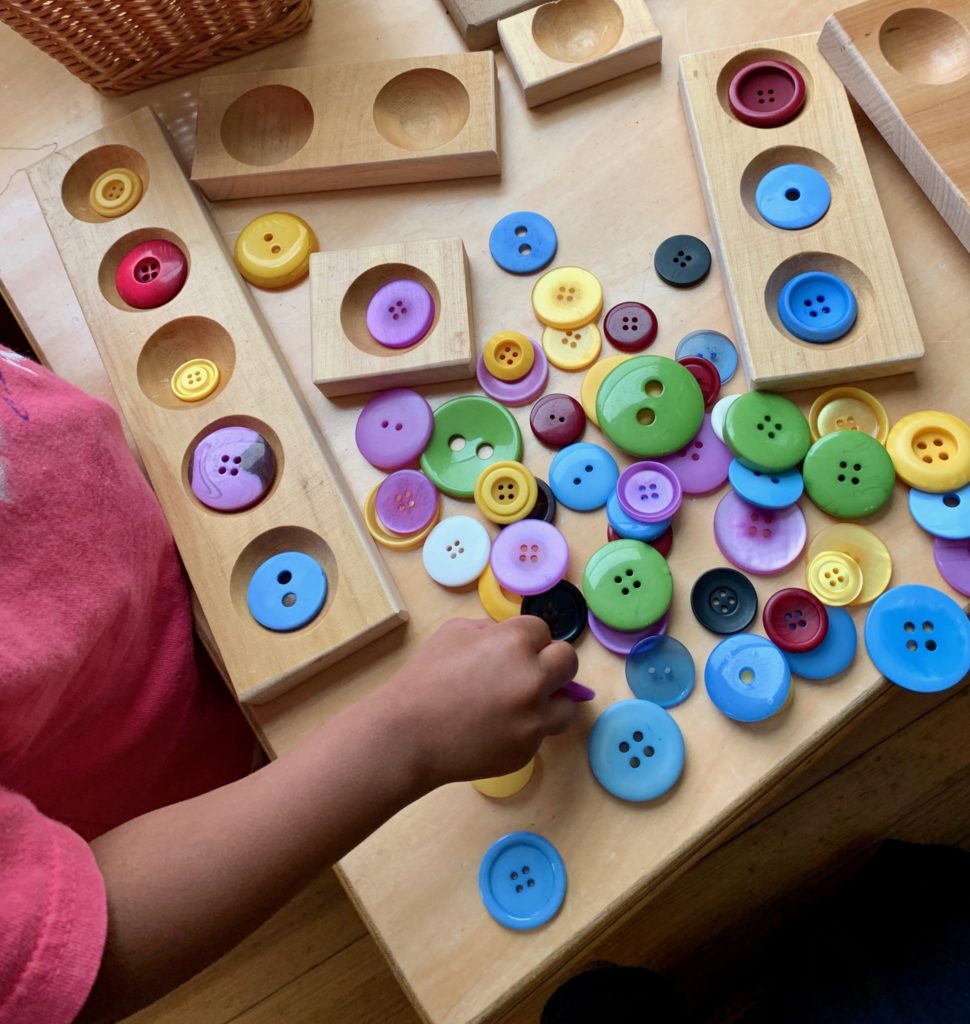
While your children are playing with their collections and frames, you can mentor the counting by putting a counter in each square of the frame and saying, “One, Two, Three, Four, Five—you have five buttons.” When a child counts, “1,2,3,4,5 buttons,” knowing that the last number represents the number of buttons in the collection, that is known as cardinality. It’s a school standard for kindergarten. Your child just thinks it is fun.
Just a reminder, we are keeping it fun. Playful math. Developmentally appropriate. It might look like this:
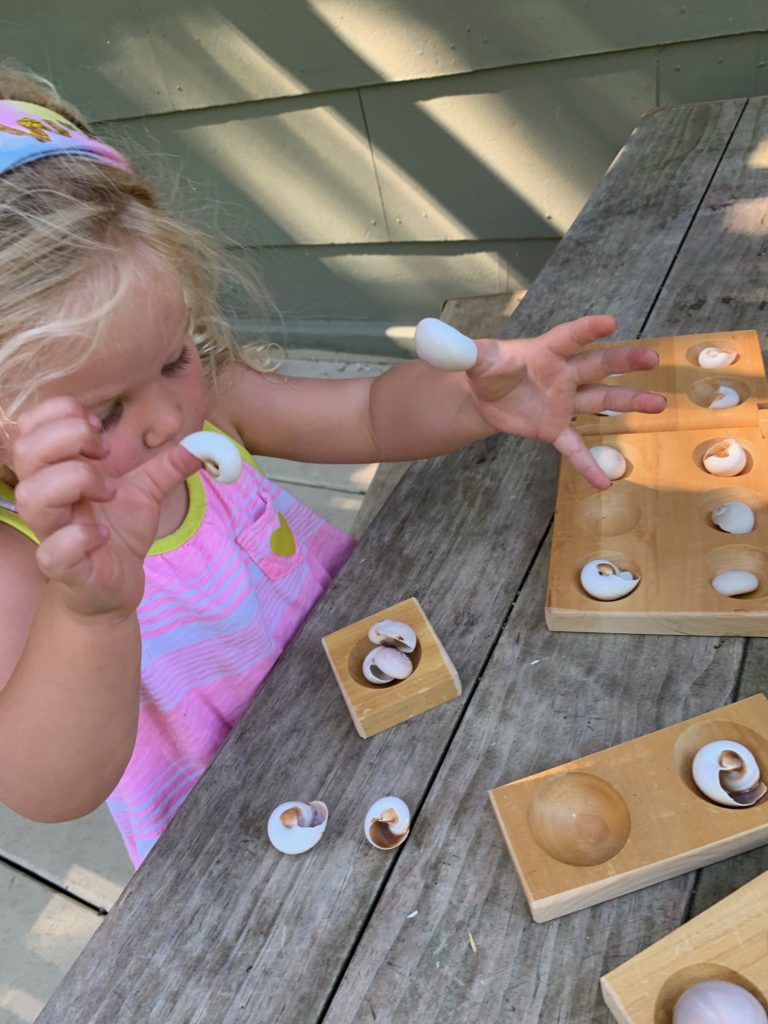
It’s a great foundation for future academic success! Let the fun begin!
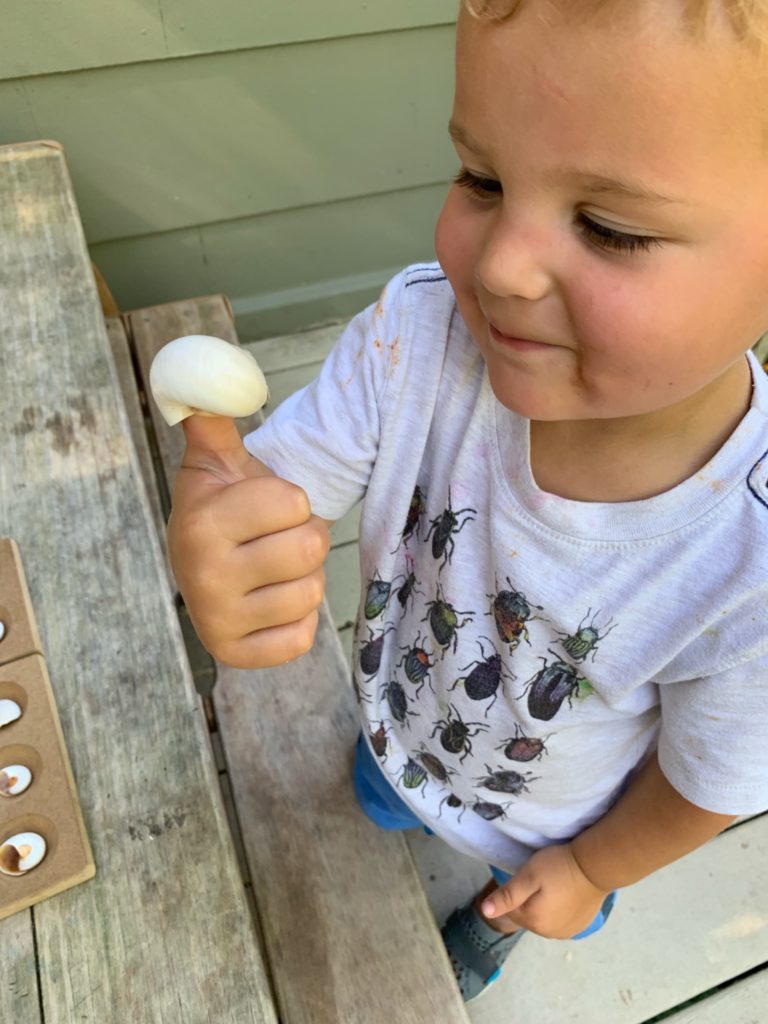
Here are our book recommendations for this week!
[amazon_links]
Do your children play with ten frames? Share your ideas with all of us! I know that many of us have a love/hate relationship with math. But, trust me, this new math is going to change all that for our children. It’s good! Really, really good!

Diann Gano is a participant in the Amazon Services LLC Associates Program, an affiliate advertising program designed to provide a means to earn fees by linking to Amazon.com and affiliated sites.
Love your use of natural and common household items. What a great way to set a foundation for math as well as vocabulary for early learners!
Thanks, Shelly! When we supply the tools and time for exploration, math comes so easily!
Agree great use of objects around household also great way of learning math vocabulary.
The variety of objects is inspiring! Objects from nature and everyday household items…interesting for little ones!
Thanks, Katie. We will try to keep it inviting, by using simple, natural materials. They are fun to play with and wonderful to touch!
Great!
using the frams is so neat and inviting to help children want to participate
I love this idea! I have an old mancala game set that I never use anymore and it’ll be a great and organized way for my little ones to be fully engaged in one-to-one counting! Also, fun to see them playing with one of my old toys. 🙂
LOVE the five frame idea for my twos! Can’t wait to put them to use in the classroom!
I love how they use simple and interesting materials to count so the children can have fun while counting.
natures objects are interesting and colored. Bottoms are also an awesome source to apply math,Thanks!!
I like the idea of taping a five frame on a table.
It’s a great way to teach time going in a 1-5 count.
It’s a great way to teach time going in a 1-5 counts.
I love the idea of separating the five frame allowing for construction and deconstruction of numbers! Play is learning.
I like the five frame and ten frames and how you separated them, even for the young learners. I loved how you taped the frames to the tables so the children can play with them.
Such a nice use of smaller sets to help solidify concrete understanding of quality.
I love the use of loose parts in the counting frames. We use a generic number frame to go along with our themes.
Love the idea of using a 5 frame for younger children.
Using the frames is a great way to for children to see one to one correspondence in action!
actually I’m am astonished, I had this 10 frame in my classroom closet cause I had no idea how to use it or what to do with it, now I know and will be pulling it out of the closet.
This is brilliant! I’ve been looking for way to introducing counting and one to one correspondence to my toddlers and this is the best idea I have found!
I love how five and tens frames help form such a strong mental image of numbers.
Some great ideas on how to count.